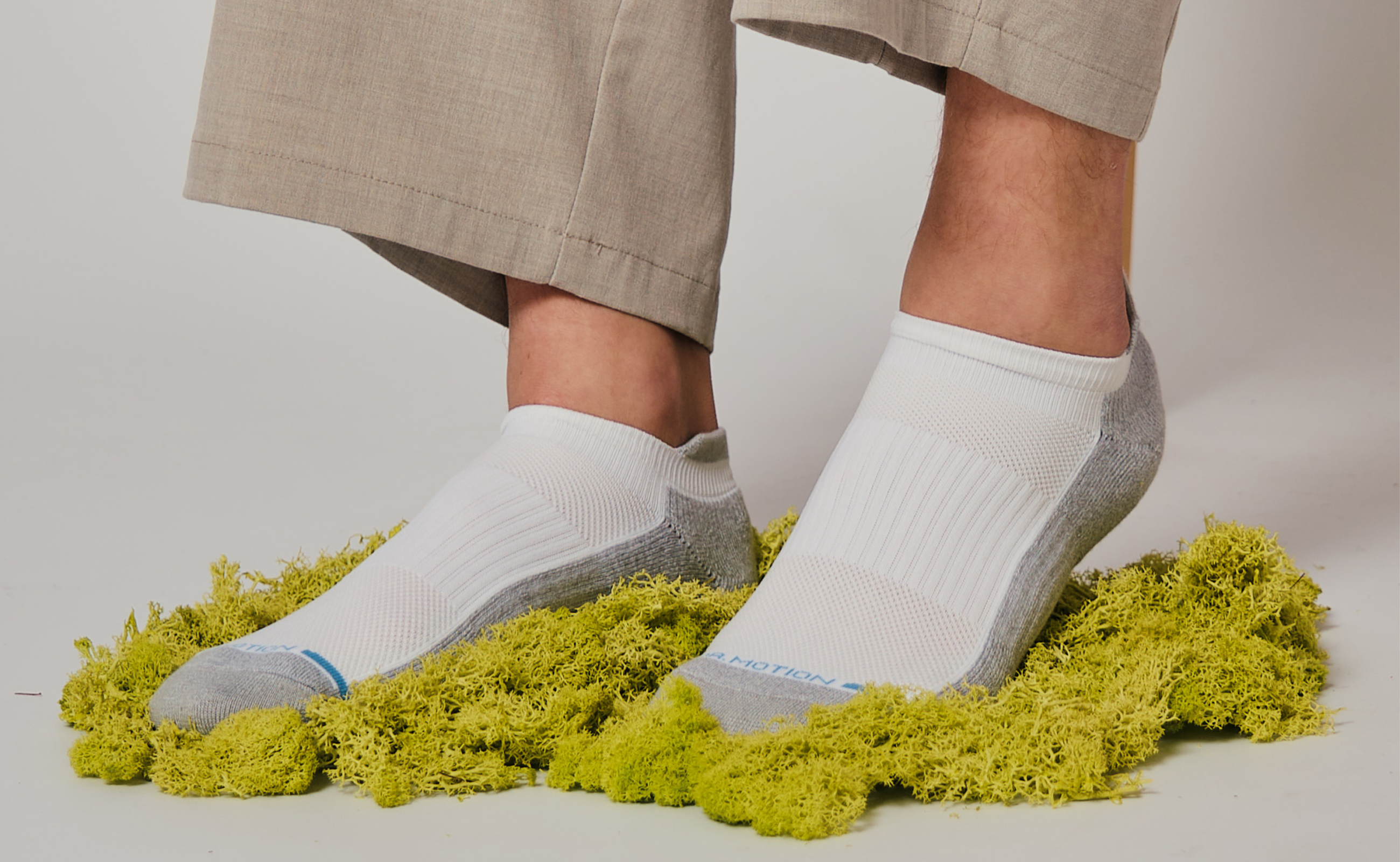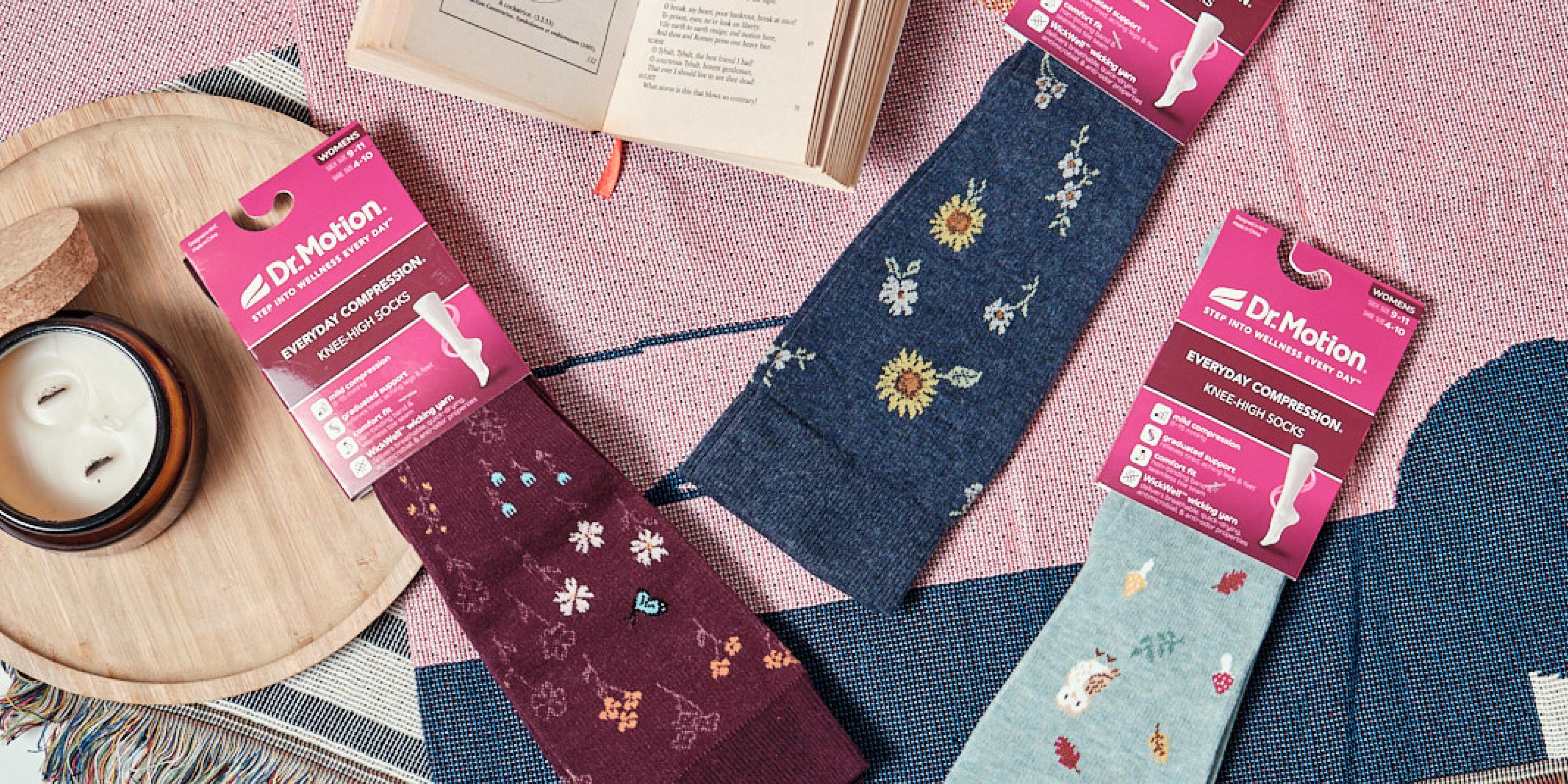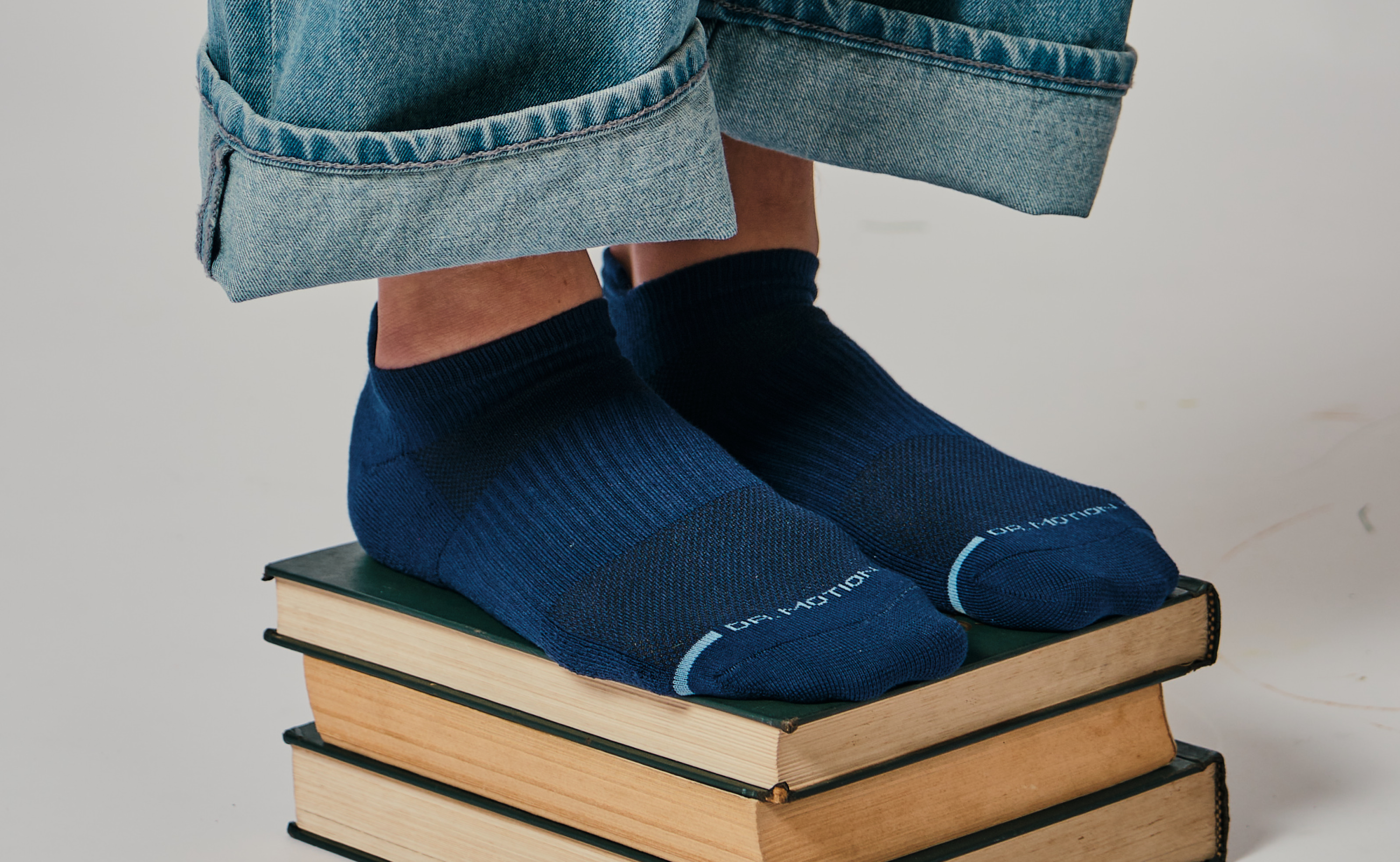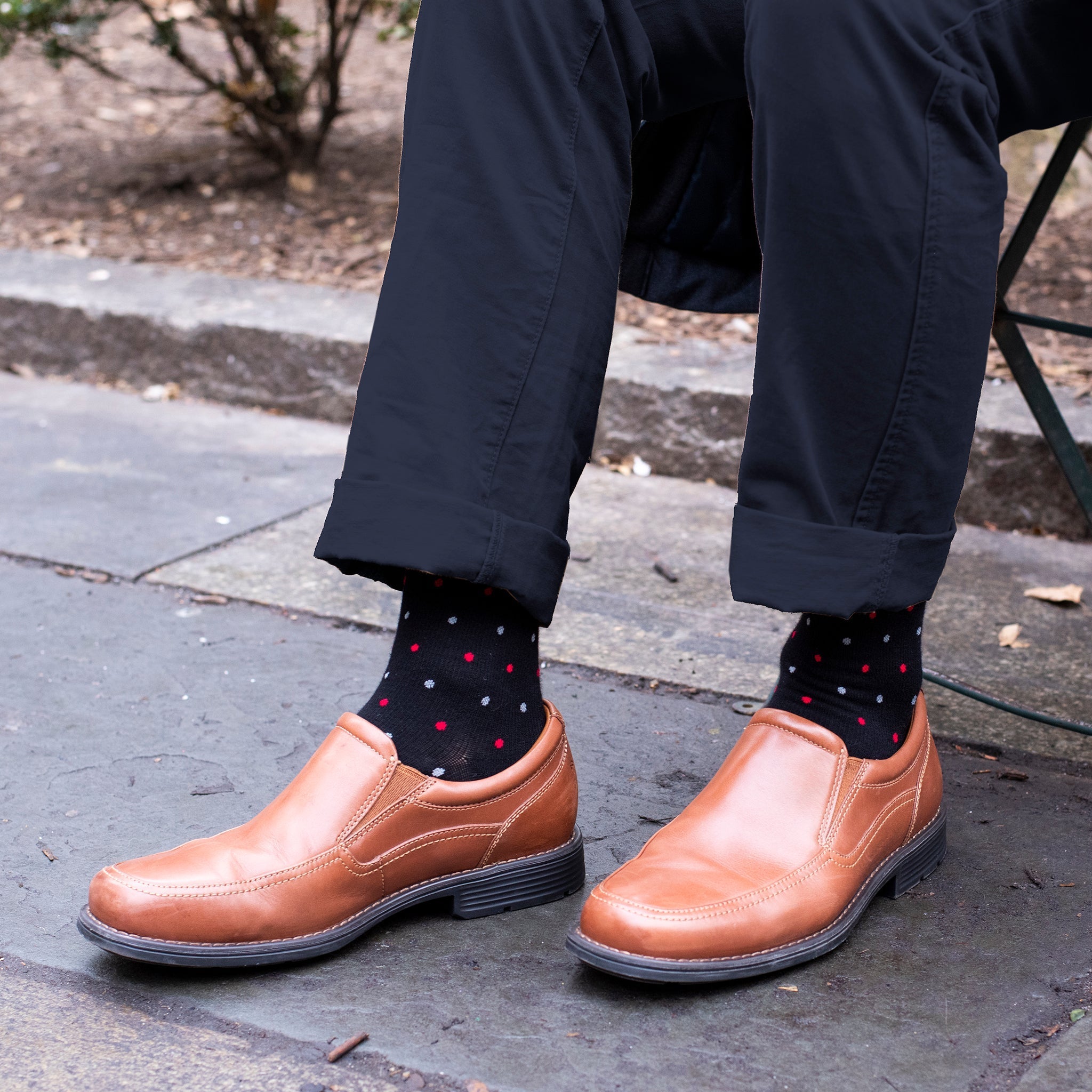Article: How Pregnancy Socks Help Relieve Swollen Feet
How Pregnancy Socks Help Relieve Swollen Feet
Did you know that 75% of women experience swollen feet, swollen ankles, with knee and feet pain during pregnancy? But only 25% of pregnant women use the one therapy that is proven to reduce pregnancy-related edema — wearing pregnancy socks for swollen feet like those made by Dr. Motion.
How to reduce swelling during pregnancy
Unfortunately, pregnancy and swelling go hand in hand. However, your belly isn't the only thing that swells during pregnancy. Most women notice mild swelling throughout their bodies particularly, thanks to the laws of gravity, in their ankles and feet. But it isn't just gravity that causes pregnancy feet swelling.
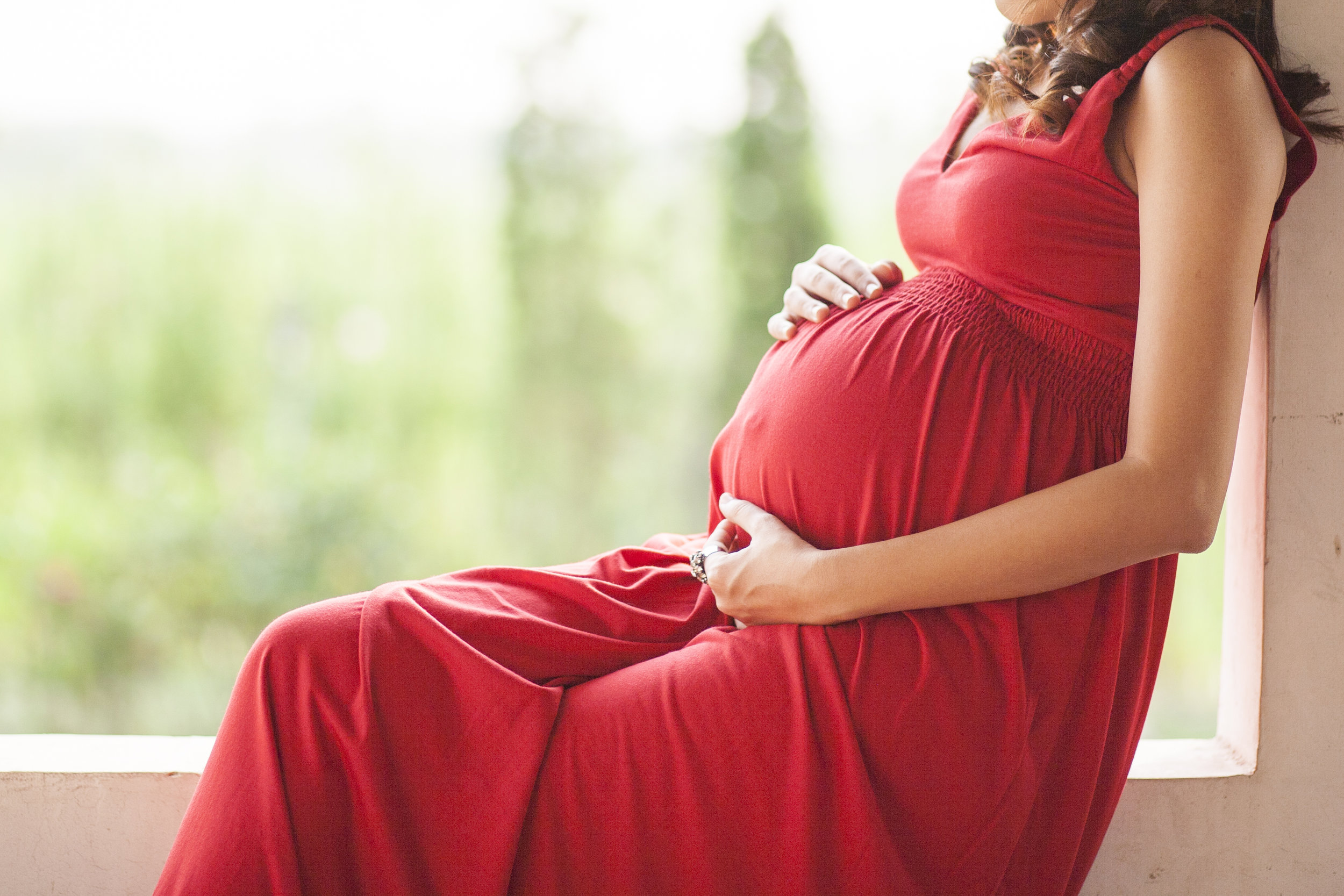
A woman's body produces extra blood to support the growing baby. Blood circulates away from the heart through the arteries and back to the heart through the veins. A large vein called the inferior vena cava (IVC) re-circulates blood from the legs to the heart. It has rigid walls to prevent blood from flowing backward. By the 22nd week of pregnancy, the uterus has expanded enough that the IVC can't relax to let enough blood flow upward, so blood and fluid accumulate below the belly.
If you could just spend the whole day in bed with enough pillows to keep your toes over your nose, fluid accumulation wouldn't be a problem. Unfortunately, most pregnant women have to spend substantial time on their feet. If they dare to take off their shoes for a little relief, it may be impossible to get them back on. So what are the secrets of reducing feet swelling during pregnancy when it’s making you miserable?
-
Exercise! Try pregnancy-appropriate exercises such as walking, which helps to keep fluid moving past your calves. If your healthcare provider permits, try swimming. Exercise in water pushes blood past your kidneys, which take it out of circulation for you.
-
But kick up your feet when you are sitting. Elevating your legs reduces the resistance of gravity to blood flow through your veins and fluid flow through your lymphatic system. Just don't sit for too long without getting up to move around. About five minutes of perambulation per hour of sitting is helpful.
-
Sleep on your side to take pressure off the veins that return blood to your heart and allow more flow to your kidneys.
-
Drink lots of water. This sounds counterintuitive, but if your body senses you are becoming dehydrated, it will retain fluid.
-
Wear women’s compression socks. The kind of compression socks experts include in their lists of things to make pregnancy more comfortable aren't the heavy-duty, incredibly tight compression socks prescribed after leg surgery or to treat varicose veins. They are the lighter, inexpensive, stylish, easy-to-wear compression socks that athletes wear to increase agility and travelers wear to prevent tired, aching legs.
There is scientific evidence that lighter-pressure compression socks reduce foot swelling and pain during pregnancy. Researchers at a university hospital in Poland followed 54 women, all of whom tried multiple methods to reduce foot pain during pregnancy, but only half of whom made a habit of wearing light compression socks every day. While wearing compression socks didn't offer perfect protection against needing a slightly larger shoe size once the baby was born, the women continued wearing the socks even after the baby came.
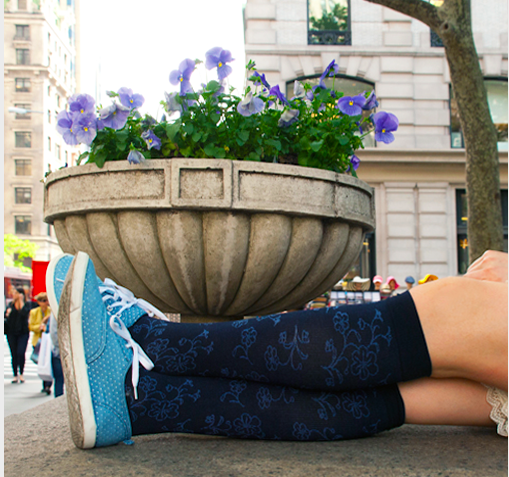
Make Dr. Motion compression socks for pregnancy one of your things to make yourself more comfortable.
There are some very simple remedies to relieve swollen ankles and feet:
-
Stay hydrated.
-
Sleep on your side.
-
Keep moving.
-
Elevate your feet whenever possible, and
-
Wear Dr. Motion compression graduated compression socks during pregnancy every day.
Maternity Compression Socks
Compression socks are the forgotten component of reducing edema in pregnancy. Let Dr. Motion make the difference that keeps you comfortable as you wait for the birth of your child. Get the foot and ankle support during pregnancy you need with our compression socks today!
Disclaimer: This article provides information solely for educational purposes, including but not limited to text, graphics, images, and other materials contained herein. This article is not intended to substitute for professional medical advice, diagnosis, or treatment. Always seek the advice of your physician or another qualified healthcare provider with any questions you may have regarding a medical condition.



